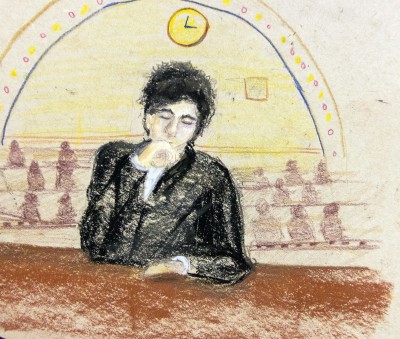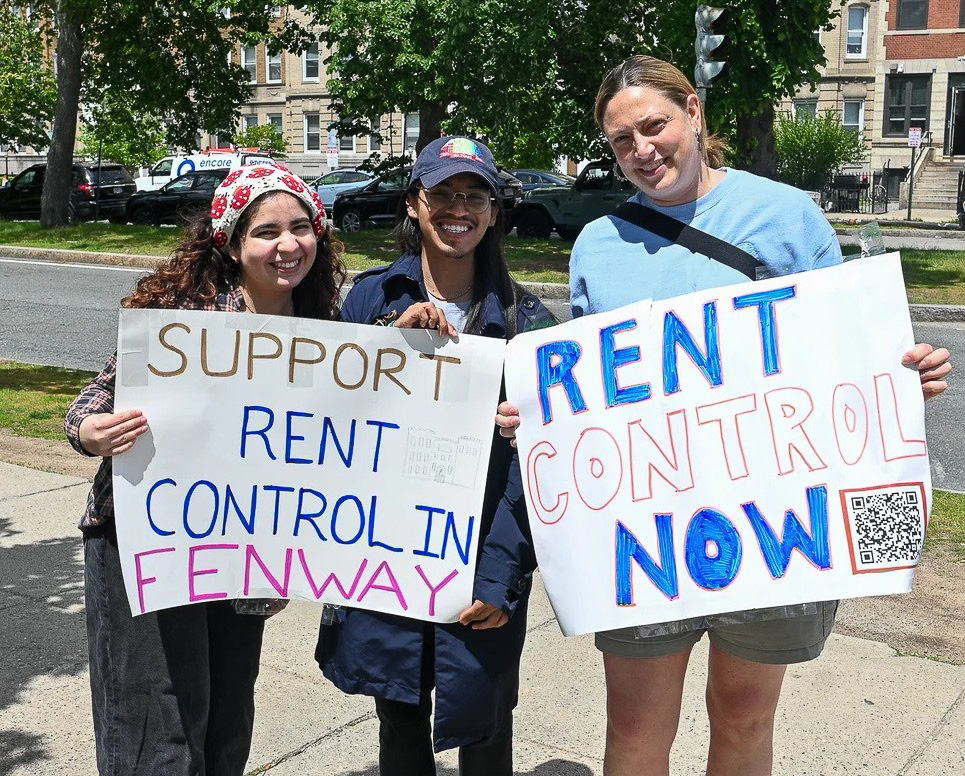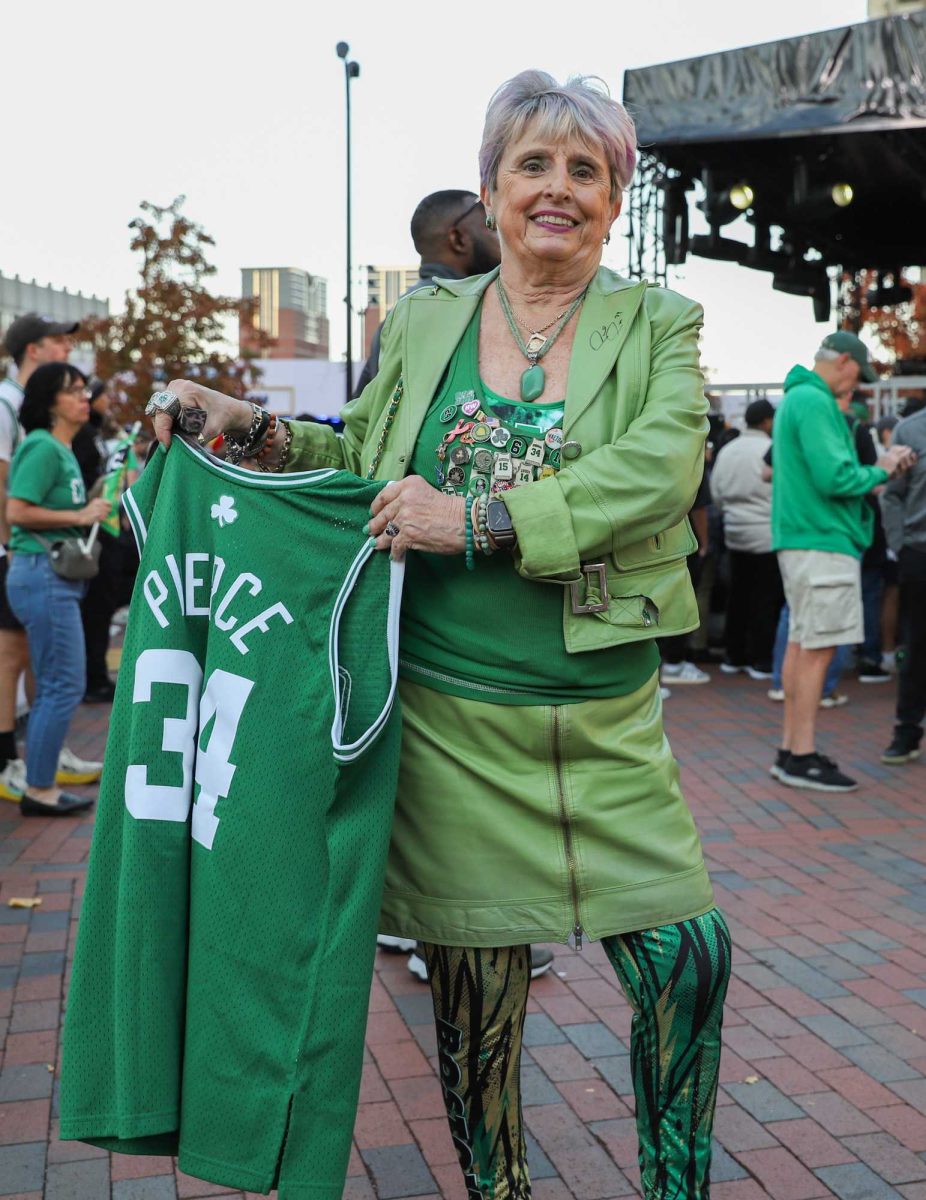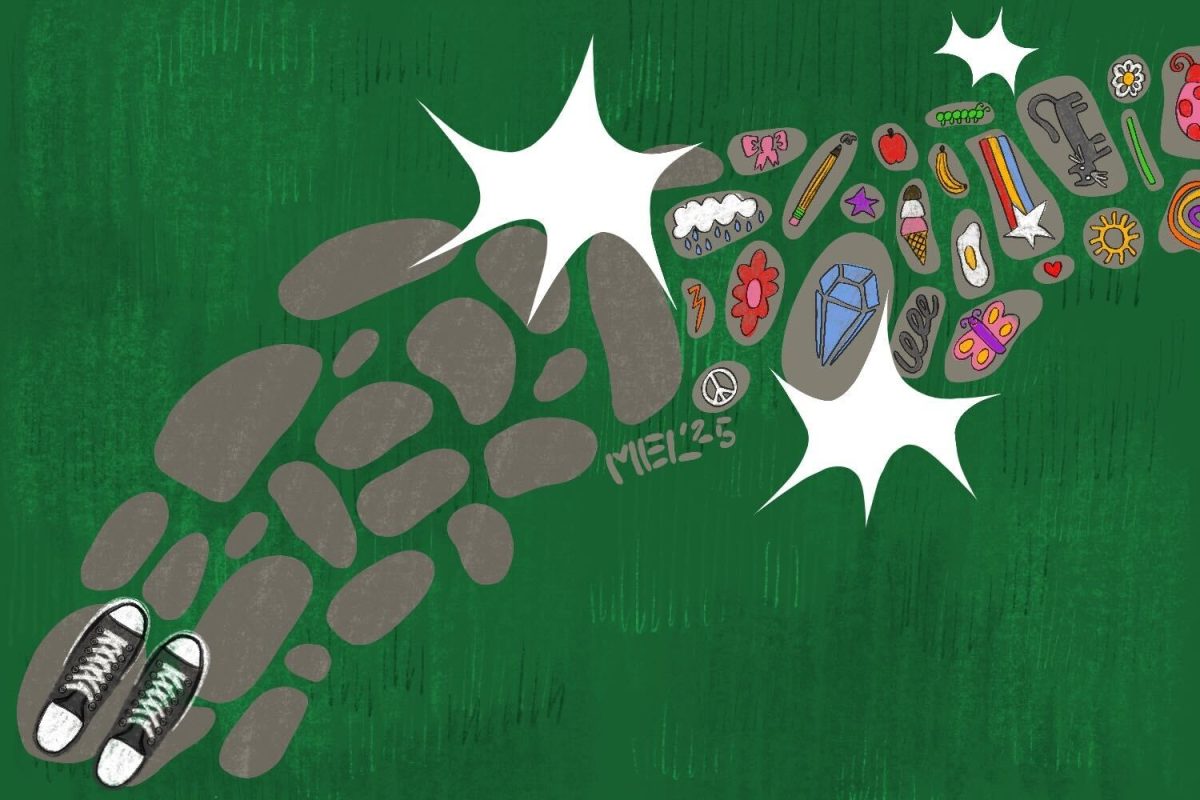The trial of Dzhokhar Tsarnaev continued Monday after a break over the weekend. Tsarnaev, a 21-year-old former University of Massachusetts Dartmouth student, is accused of placing two bombs at the finish line of the Boston Marathon on April 15, 2013, killing three people and injuring more than 260. He has pled not guilty to the 30 counts for which he has been charged.

The first person called to the stand by the prosecution was Katherine Lindstrom, a forensic pathologist who performed the autopsy of Lingzi Lu, a Boston University graduate student who was one of three people killed in the Marathon bombings.
“The cause of death was blast injuries to the lower extremities, and the manner of death was homicide,” Lindstrom testified.
Lindstrom went on to explain the severity of Lu’s injuries, which were caused by debris hitting and going through her body and involved the severing of nerves and the gashing of muscle, predominately in the thigh region. Lu’s skin was torn almost completely around her upper thigh, and her transfemoral artery was “cut in half.”
Lu’s death as a result of the injuries, Lindstrom said, would not have been immediate, but “relatively quickly, within seconds to minutes.”
In describing Lu’s gaping injuries, Lindstrom said there were pieces of debris, including metal pellets, small nails and pieces of plastic found inside Lu. A large piece of metal found in Lu’s purse and a small piece of metal found in her leg were presented to the jury and entered as evidence.
Pictures of Lu’s autopsy were shown to the jury, but not presented to the media or the public.
Finally, Lindstrom was asked about the extent of the injuries to Lu’s head.
Lindstrom said Lu had a bruise underneath the skin on the right side of the head, but said it was a “relatively minor injury” that would have “no impact” on brain function. The prosecution then asked if it was possible that Lu was conscious when she bled to death.
“Possibly yes,” Lindstrom said.
The defense declined to cross-examine Lindstrom, and the prosecution then called FBI field photographer Michelle Gamble to the stand. Gamble, a 12-year veteran of the evidence response team, was the FBI’s field photographer in the Boston Marathon investigation. Gamble testified that she took photos of evidence found near the Boston Marathon finish line on Boylston Street, including the bodies of the three victims of the blasts.
Gamble’s testimony focused on the examination of photographs and video from shortly before and directly after the second blast occurred on Boylston Street.
Phone records from T-Mobile coincided with the time and length of the phone call the defendant was seen making on surveillance footage from Forum restaurant taken between the first and second blasts.
Gamble testified that after Tsarnaev put his backpack on the ground at 2:45 p.m., he stood almost directly behind it.
“He was kind of hovering over it,” she said.
By comparing a photograph taken of the patio of Forum restaurant at 6 a.m. on the day of the 2013 Boston Marathon with a photograph taken after the second blast, Gamble was able to effectively pinpoint the site of the second blast.
She was able to identify the time of the second blast to be 2:49 p.m.
After Gamble was shown pictures of before and after the second blast on Boylston Street and identified the defendant, Lu and the family of Martin Richard, the 8-year-old who died from the second blast, the prosecution ended its questioning of Gamble.
During its cross-examination, Tsarnaev’s defense team focused heavily on Gamble’s chalk depiction of the location of Lu, the Richard family, Tsarnaev and the blast on Boylston Street. The defense asked Gamble for clarification that Tsarnaev was not directly next to the blast as Gamble depicted.
“Everybody that’s in that graphic was in there at 2:47 with the exception of Tsarnaev,” Gamble said.
Gamble then clarified that the depiction she created was meant to show where everyone was one minute before the second blast, not at the time of the phone call between the defendant and his older brother Tamerlan Tsarnaev. In regard to the phone call, the defense asked Gamble if she knew that the phone records indicate the time elapsed since the phone was dialed, not the duration of the phone call. Gamble said she was not aware of this.
Gamble was also asked by the defense why she did not identify other people standing close to the defendant in her depiction. Gamble explained that the government did not ask her to identify those individuals.
After a short morning recess, the prosecution called Henry Nields, chief medical examiner for Massachusetts, to the stand. Nields performed the autopsy of Martin Richard.
“He was approximately 53 inches and 69 pounds,” Nields said.
Nields was presented with a large evidence box that contained the clothes Richard was wearing at the time of the autopsy. Nields removed each piece of clothing from the box individually and presented it to the jury. A green long-sleeved jersey, a Patriots football t-shirt and a jacket were all severely discolored due to blood and shredded on their respective left sides. A pair of pants worn by Richard was nearly completely melted due to the effects of the blast.
As his parents Bill and Denise Richard looked on, Nields testified that several parts of Martin Richard’s small intestine were eviscerated from his body and there were virtually no parts of his body that were uninjured as a result of the blast.
Debris and six small nails that were taken from inside the body of Richard were identified by Nields and presented to the jury.
“[The] cause of death was blast injuries of the torso, and the manner of death was homicide,” Nields said.
After identifying the cause and manner of death, the jury was shown photos taken during Richard’s autopsy. Several jurors began to cry upon seeing the photos, which were not made available to the media and the public.
To end its questioning of Nields, the prosecution asked if he could identify the age of Martin Richard.
“He was 8 years old,” Nields said.
The defense declined to cross-examine Nields, and lead prosecutor William Weinreb said the United States would be resting its case.
After a short recess, Tsarnaev’s defense team began to present its case by bringing Gamble back to the stand.
Defense attorney Miriam Conrad questioned Gamble about her involvement in the search at the Tsarnaev apartment in Cambridge and the search of the defendant’s dorm room at UMass Dartmouth. The court then took a lunch break.
The defense called Gerald R. Grant, a computer forensics expert who has consulted on approximately 400 cases for the Federal Defense office, who testified that Tsarnaev’s phone was on the UMass Dartmouth campus when the pressure cookers, which were allegedly used to make the bombs, were purchased at the Square One Mall in Saugus.
Referencing cell-tower data, Grant said there is nothing to indicate that Tsarnaev’s phone ever left the Dartmouth New Bedford area when the pressure cookers were purchased on January 31, 2012 at 8:38 p.m., suggesting the defendant was not the one to buy them.
The defense raised similar doubts as to the defendant’s role in purchasing the BB ammo tied to crude bombs used in the firefight with police in Watertown, with Grant testifying that Tsarnaev’s phone was in the New Bedford area when the ammo was purchased at two separate New Hampshire Walmart’s.
The defense introduced records from UMass Dartmouth’s Maple Ridge Hall showing that Tsarnaev swiped into his dorm on April 16th at 10:56 a.m.
Grant also testified that tweets posted to Tsarnaev’s Twitter account on April 16th, 2013 were done so through a web browser rather than a mobile app, suggesting the defendant was posting on a computer rather than his phone.
However, in cross-examination, Grant said the tweets could have been sent using the web browser on a mobile phone.
Assistant U.S. Attorney Aloke Chakravarty’s said Tsarnaev swiped into his dorm at 1:38 a.m. on the day of the bombings and that Grant could not show where he was at the time of the attacks.
The prosecution highlighted the fact that Grant does not have any specialty in analyzing data from Twitter, nor does he have specialized training in analyzing cell-site data from AT&T, specifically.
Closing out his cross-examination, Chakravarty asked Grant, “Is there anything you reviewed in the data in preparation for this case that shows that Tamerlan made these purchases?”
To which Grant responded, “No Sir.”



















































































































